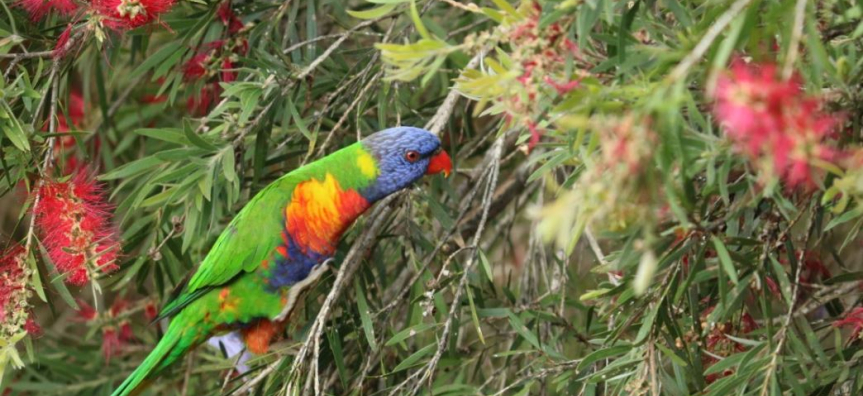
Here are some tips on creating habitat in your backyard for our precious local wildlife. Planting native flora encourages native birds and animals to visit and helps them survive habitat loss.
Enjoy the bird songs and happy planting!
Backyard Habitat Species Guide
A number of different native plant species have been selected for our Backyard Habitat program.
View the Backyard Habitat Species Guide which details preferred soil types and locations, expected growth height, descriptions of leaves and flowering information for the 53 native species used in our plant give-aways.
Lists of trees, shrubs and other plants that are most suited to your area can be found in the Northern Beaches Native Plants Species Guide.
Attracting birds and animals
Watch some great videos on building a backyard Possum Drey, Water Station, Bee Hotel and Lizard Lounge with guidance from Council staff in DIY projects for your home.
More information on creating habitats for small and large birds, frogs, mammals, reptiles and insects can be found at Backyard Buddies.
Birds in Backyards has tips for making your garden safe for birds, as well as building bird baths and nest boxes. The Department of Planning, Industry and the Environment's Birds in Sydney has garden bird profiles and the Habitat Network has resources on building small bird habitat.
Sustainable Gardening Australia also has good tips for habitat gardening.
Planting native flora
Before you plant native flora:
- Prepare the site
- Consider your overall garden design
- Plan for the mature height of the plants and for root growth
- Watch this short video for some great tips by our Volunteer Coordinator:
Steps to planting:
- Dig a hole at least twice as wide and slightly deeper than the tube size.
- Loosen the soil at the sides of the planting hole. Fill the hole with water and allow to drain away.
- Place the gently loosened plant in the planting hole. Backfill the soil so that the top of the root ball is level with the surrounding soil.
- Press the backfill down with your hands and shape the soil surface slightly to hold water.
- Water the plant well after planting, making sure the soil is moist but not soggy.
Sit back and enjoy your backyard habitat and the wildlife it attracts to your home!
Other planting tips:
- Call 1100 Dial before you Dig to check that you're not planting over plumbing, sewer pipes or service or power lines.
- Our climate is also suitable for growing plenty of food plants - check drainage, soil type, sunlight and available space.
- Use water sensibly so plants get the maximum benefit.
- Please do not plant or prune trees on footpaths, in parks or near waterways.
- Be proactive about fire management - place garden beds and plants away from the house and regularly clean gutters.
- If you have received a Council plant give-away please dispose of the plant tube responsibly in the yellow lidded recycling bin.
An ecologically sensitive backyard
Watch some great videos on fun and easy backyard composting and using a worm farm to recycle your food scraps at home and reduce waste to landfill while making rich natural fertiliser for your garden.
The Australian Native Plants Society provides some interesting resources for native gardens.
Permaculture Northern Beaches has tips on designing ecologically sensitive backyards for food plants and profiles of the local native bees.
The YourHome Guide to Environmentally Sustainable Homes details Water Sensitive Urban Design (WSUD) principles for responsible management of water flow in your garden. Consider minimising impervious surfaces and other WSUD principles to allow for groundwater recharge, improve water quality in our creeks and minimise erosion and flood risk.
And finally, don't forget to keep cats indoors at night and ensure cats and dogs don't attack wildlife. See some great tips from WIRES on responsible pet ownership. Also see 'Protect your cat, protect your wildlife'.
